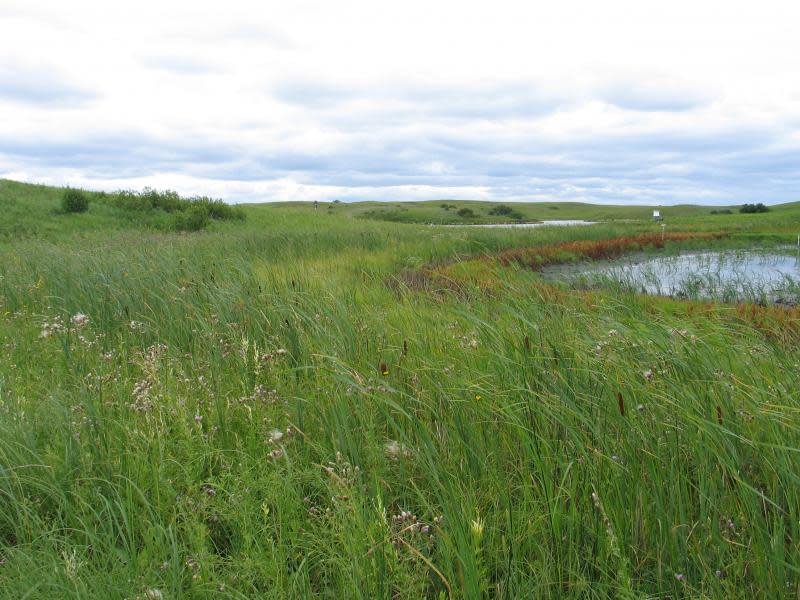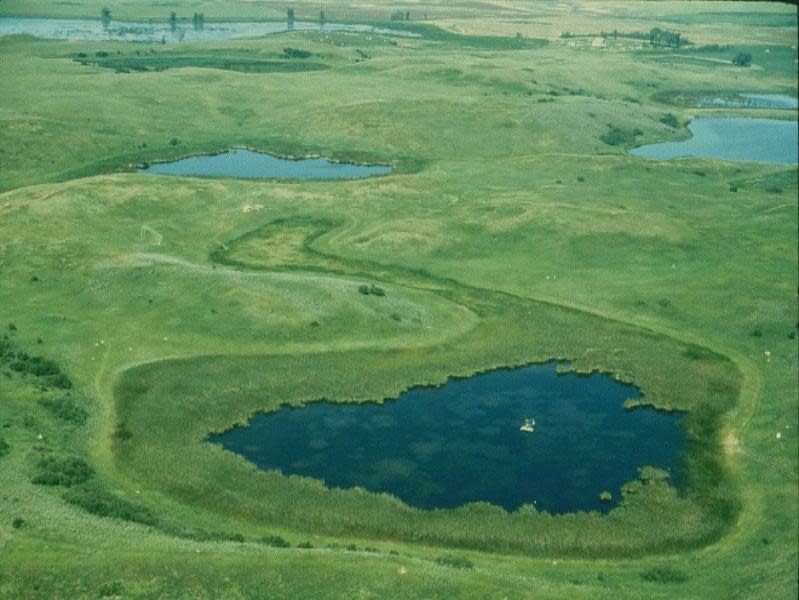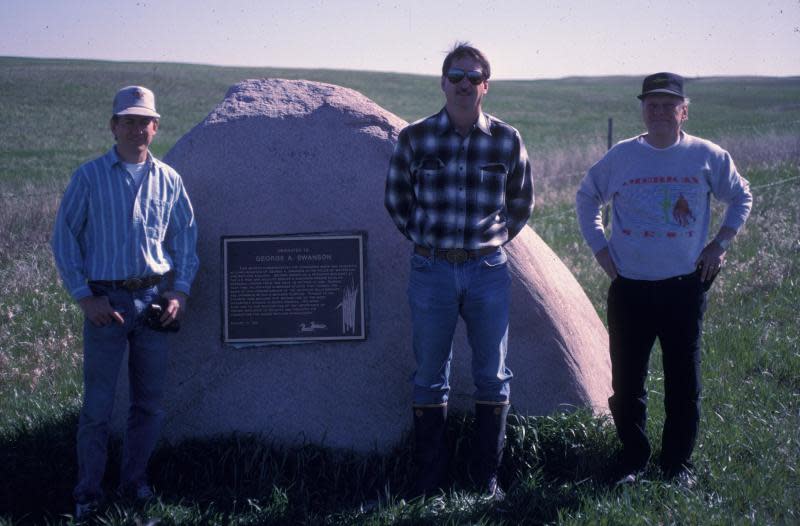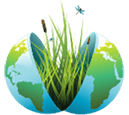
Cottonwood Lake Study Area
Categories
North Central (IA, IL, IN, MI, MN, ND, NE, OH, SD, WI)
About
- Protects biological diverse wetland flora, fauna and/or their habitat
- Rare or unique wetland type within its own biogeographical region.
The Cottonwood Lake Study Area, a US Fish and Wildlife Service owned complex of seventeen prairie wetlands in the heart of the Prairie Pothole Region, is internationally recognized as one of the most intensively studied wetland complexes in North America. More than 100 scientific publications, graduate dissertations, and theses resulting from studies at the site provide the bulk of information currently available to guide wetland management in this important region of the United States and Canada. One of the greatest contributions of Cottonwood Lake Study Area is that long-term data collection efforts located there provide an invaluable resource on hydrological, chemical, and biological attributes upon to base comparisons with ongoing research, including studies on wetland ecosystem services and climate change. In addition, understanding of the interrelation of hydrological, chemical, and biological processes revealed by research at the site provides the scientific foundation allowing wetland managers to better understand the outcome of management decisions. In 1992, a dedication plaque honoring the Study Area’s founder, George A. Swanson, was installed on a glacial boulder at the site. Wording on the plaque (partially provided below) describes the importance of this site to his research and the role it has played, and continues to play, in developing our knowledge of the natural functioning of prairie wetland ecosystems. The Cottonwood Lake Study Area is truly one of our nation’s “Wetlands of Distinction.”
“… he [George Swanson] initiated numerous studies [at the Cottonwood Lake Study Area] that formed the basis of our understanding of the intricate relationships and dynamics within a wetland complex. Thanks to his efforts, this wetland site became one of the most intensively studied in North America. His work [at the site] also led to our recognition of the importance of prairie wetlands to wildlife and provided the foundation of sound wetland management.”
Exemplary Ecosystem Services:
- Aesthetic/cultural heritage value/ provisioning
- Education
- > 100 ft
A geo-narrative highlighting data resources available from the Cottonwood Lake Study Area is available at this link.
A live webcam overlooking one of the wetlands at the study area can be viewed here.
- Inland Deep Fresh Marsh
- Inland Shallow Fresh Marsh
- Inland Saline Marsh
- Glacial stagnation moraine of clayey silt till >100m thick overlying shale bedrock of the Pierre Formation.
Images



